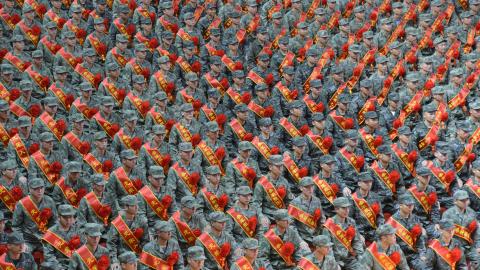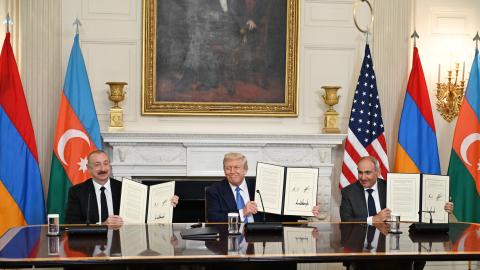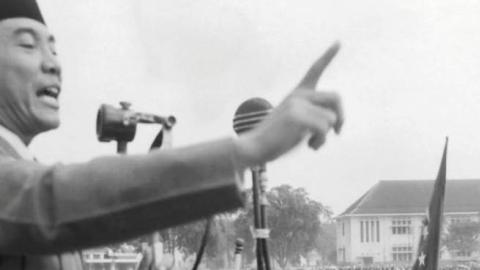Modern Asian history may be the most important subject that most educated Americans know almost nothing about. With the center of gravity of world politics now firmly located in the Indo-Pacific, many are looking for ways to deepen their understanding of the most populous, fastest-growing and potentially most dangerous region in the world. Tim Harper’s “Underground Asia: Global Revolutionaries and the Assault on Empire” is an excellent place to start. It is a clearly written, brilliantly researched examination of the people and movements that shaped Asia’s course in the 20th century and continue to influence the continent today.
In the early part of the century, when Mr. Harper’s narrative begins, European colonialism seemed permanently established in Asia. In 1906, the power of the Netherlands in what is now Indonesia reached its grim apogee as Dutch forces shelled the royal capital of the ancient Balinese kingdom of Badung until the battered, unarmed defenders, in a final act of defiance, “processed out of the palace and threw themselves, singing, at the Dutch automatic weapons.” An estimated 1,000 were killed.
The early arrival of the Industrial Revolution had given western nations, especially Britain, what appeared to be an insurmountable industrial, economic, political and military supremacy. Prospectors, planters, industrialists, missionaries and soldiers descended on traditional Asian societies and, shunting hapless native rulers aside almost everywhere, began to modernize Asia to suit western needs. Steamship lines connected ports; vast urban complexes grew up where trade routes crossed; and railroads carried the agents, the goods and the ideas of empire deep into the countryside.
European power in Asia looked unshakable, but only 43 years after the fall of Badung the Dutch were forced to recognize Indonesian independence amid the abject regional collapse of European rule.
How Asia’s ragtag revolutionaries turned that fierce desire for freedom into movements that could overcome European advantages in technology and organization is the story Mr. Harper wants to tell. It’s an ambitious assignment. Then as now, Asia was an overwhelmingly diverse region, and those differences were in many cases exacerbated by the ways that French, Dutch, British and Japanese colonialism overwrote preexisting cultural linkages with new patterns and influences. Often relying on colonial police archives, Mr. Harper reconstructs the obscure lives of the revolutionary generation who hammered out the ideas and built the movements that would lead Asia through the astonishingly rapid destruction of some of the largest and most powerful empires the world had ever seen.
Readers will sometimes struggle to follow Mr. Harper as his narrative follows a changing cast of characters from British India, French Indochina, the Dutch East Indies, China and Japan on their ideological and global journeys. But perseverance pays off. “Underground Asia” provides a panoramic overview of the revolutionary ferment that would shape a century of Asian politics.
Modern Asian history has been marked by both radical breaks and deep continuities, and the book helps western and non-specialist readers grasp some key questions and debates on which the course of Asia’s revolutions turned. There is, to begin with, the question of whether “Asia” really exists. There was a brief period in the early 20th century when Japan, the first Asian country to force Europeans to recognize it as an equal power, seemed to stand as the spearpoint of an Asian renaissance, and young intellectuals and activists from China and Vietnam and British India flocked eagerly to Tokyo to learn from Japan. But as Japan used its power to colonize Korea and join the Europeans in the scramble for China, a growing consciousness of national interests and national differences began to qualify the pan-Asian enthusiasm. Yet divided as Asian peoples were and are, the shared histories of colonialism and backbreaking struggles for independence and development continue to create common bonds and goals.
“Underground Asia” also helps readers understand the complex relationship between communism and nationalism in the East. In European history, the two were usually rivals. In Asian history their relationship has been more complex. At 15, Chiang Kai-Shek’s son Chiang Ching-kuo was a classmate of Deng Xiaoping at a Comintern-sponsored military academy for Chinese students in Moscow. When word came two years later that the elder Chiang had purged his former Communist allies back home in China, the younger Chiang wisely issued a statement: “ Chiang Kai-Shek was my father and my revolutionary friend. He has now become my enemy.” Stalin ultimately sent him home and Chiang Ching-kuo would live to rule Taiwan while his classmate Deng ruled across the straits in Beijing.
Mr. Harper also provides rich if unsettling insights for American readers trying to understand the role of human rights in Asia today. Even Asian revolutionaries who ended up in the Communist camp were often attracted by western ideas about human rights, but they—and others—were almost universally repelled by what they saw as the naked hypocrisy of the West. What was European colonialism, after all, but a gigantic policy aimed at sacrificing the human rights of Asians to the economic interests of Europe? The Chinese officials who listen with contempt to western complaints about the Tibetans, the Uighurs and Hong Kongers have a historically well-grounded belief that, in the end, the West will always sacrifice its conscience to its wallet.
Mr. Harper can’t tell us what we most want to know about Asia—what happens next?—but there are useful clues. Perhaps the most important is the extraordinary pace of change that has characterized Asia in the modern era. Great powers rise and fall, empires come and go, pandemics disrupt economies, ancient societies convulsively modernize, and leaders burst out of obscure neighborhoods in vast cities to shake their countries and the world. That has been the pattern of Asian history since the beginning of the last century. Expect more of the same.
Read in the Wall Street Journal


















